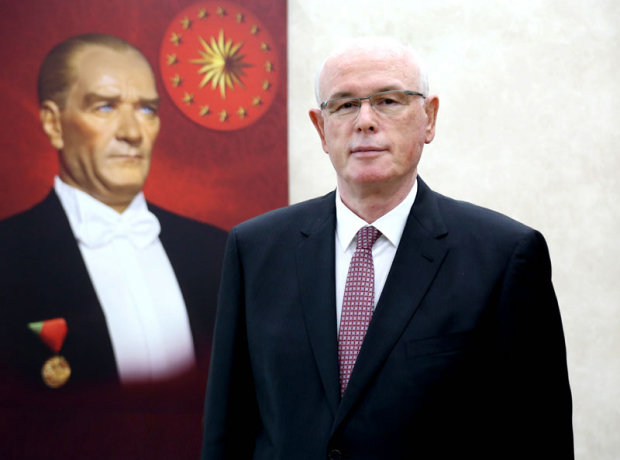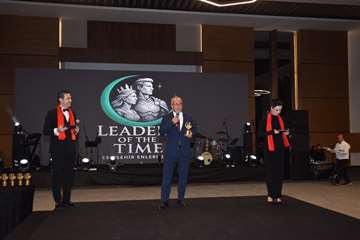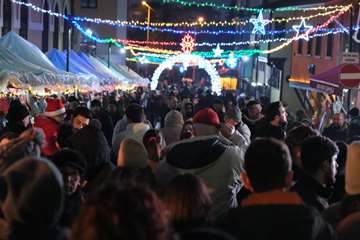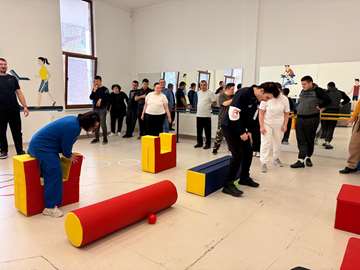1- WOODWORK GALLERY: The gallery is located inside the Odunpazarı Kursunlu Complex. It exhibits the works of international artists. These art pieces you will see in the museum are produced at the festivals of Odunpazarı.
2-MEERSCHAUM GALLERY: There are around 400 art pieces belonging to 60 artists in the section called Kurşunlu Complex Hanikah, since 2008. The world's best meerschaum is mined in Eskisehir. Therefore, it has become a symbol of Eskişehir. Meerschaum is also called “Eskisehir Stone”.
3-YEŞİL EFENDİ MANSION, A DAY WITH ATATURK GALLERY: Yeşil Efendi Mansion was built in 1890 by Halil İbrahim Efendi, nicknamed Yeşil Efendi. He was one of the few richest people in Odunpazarı and was one of the first Representatives of the Republic. An important feature of this mansion is that it hosted Mustafa Kemal Atatürk during his visit to Eskişehir during the War of Independence. In this gallery. You can have a chance to meet with Atatürk and Yeşil Efendi by the “augmented reality” technic which was applied in a museum for the first time in Turkey.
4-TAYFUN TALİPOĞLU TYPEWRITER GALLERY: Turkey's first typewriter gallery was opened by Eskisehir Odunpazarı Municipality. The gallery consist of Journalists Tayfun Talipoğlu’s typewriter collection. It also has a typewriter of Turkey's former Prime Minister Bulent Ecevit.
5-OSMAN YAŞAR TANAÇAN PHOTOGRAPHY GALLERY: The Gallery located within the Odunpazarı Kurşunlu Complex, consists of 4 main halls and 1 exhibition area. One of the halls is reserved as an archive and library room and the other one is completely reserved for photography. In the other 2 halls old cameras are exhibited. Photography exhibitions are organized in the exhibition area at regular intervals.
6-CONTEMPORARY ART GALLERY: Odunpazarı Municipality transformed the playground behind Atatürk Blvd into Hasan Polatkan Cultural Center Art Gallery. The municipality hosts important exhibitions here.
7-GLASS ART CENTER: It is the center where the citizens who want to learn all the subtleties of glass art gather together. The center displays and sells great examples of glass art.
8-KURTULUS MUSEUM: The Mestanoğlu Halil Mansion, which was restored by Eskişehir Metropolitan Municipality, serves as Kurtulus Museum. Information about settlement history of the Turkish Republic is offered in the Museum which blends modern technology with information and documents.
9-YILMAZ BUYUKERSEN WAX SCULPTURES MUSEUM: Eskişehir Wax Museum or Yılmaz Büyükerşen Wax Sculptures Museum is one of the most interesting museums in Eskişehir. In the museum, there are statues of many important names from the foreign world. If you have had a chance to travel abroad, it is similar to Madame Tussauds Museum. Eskişehir Wax Museum is located in Odunpazarı district where the most historical and touristic places are. The museum, which was established as a result of the personal works of the city’s Mayor Yılmaz Büyükerşen and his students, exhibits approximately 200 sculptures in all various categories, particularly wax sculptures belonging to different periods of Mustafa Kemal Atatürk.
10-MUSEUM OF CONTEMPORARY GLASS ART: The Museum of Contemporary Glass Arts is located around Historical Odunpazarı Houses. It is a first opened museum in glass art category in Turkey. Local and foreign artists, who make their piece of art in their own workshops, donated their unique creations to the museum. The opening of the museum in this beautiful city of Anatolia, where glasswork is born, have special importance for the people of Eskisehir.
11- REPUBLICAN HISTORY MUSEUM: The Republic History Museum, established by Anadolu University in Eskişehir's Odunpazarı district on April 23, 1994, was opened after the restoration of the “Numune Mektebi” building built in 1916. The museum, which aims to tell the history of the Republic and to exhibit important works of this history, starts with the from the War of Independence. There are pieces and elements about the life of Mustafa Kemal and about the epic War of Independence among the works exhibited in the Museum. In addition, pieces that tells about the Republican revolutions, books about the sociological and political expression of recent history and various works are also worth seeing. In the Republic History Museum, which contains 131 original photographs of the War of Independence; Photographs of the Battle of Gallipoli, frames from congresses and photographs depicting the Great Attack period are quite impressive.
12- ODUNPAZARI MODERN MUSEUM (OMM): Odunpazari Modern Museum is a constantly renewing platform that is inspired by Ottoman and traditional Japanese architecture and Odunpazari civil architecture elements. The museum includes modern and contemporary works of artists from Turkey and the world. The very unique pieces are exhibited with a global perspective, which promotes intercultural dialogue. OMM, which has an area of approximately 4,500 m2, has exhibition areas, various event venues, workshops, cafes and museum shop.
13- ETO INDUSTRY AND COMMERCE MUSEUM: The museum, opened by Eskişehir Chamber of Commerce, takes its visitors on an economic history journey through more than 600 works.
14- MUSEUM OF CARTOON ART: The building that is home to the Museum of Cartoon Art was built in early 1900s and used for dwelling purposes. The two-floor building has a total area of 265 square meter and it is located in the first settlement area of the town. The Museum is launched by the Research Center for Cartoon Art, which is a first in Turkey.
15- MUSEUM OF KAZAN TATARS CULTURE: In this museum, there are works that reflect the historical past of Kazan Tatars, who contributed significantly to Eskişehir culture.
16- KURSUNLU MOSQUE AND COMPLEX: The historical Kursunlu complex and the historical houses next to the Odunpazarı Houses complement each other and take you on a new journey. Kurşunlu Complex is a building complex of 16th century Ottoman Period. It was built in 1517 by Shepherd Mustafa Pasha, one of the viziers of the Ottoman Empire. The architect of the Kurşunlu Complex is probably Acem Ali, who was an architect before Architect Sinan. Acem Ali (also known as Acem Alisi or Esir Ali), whose real name was Alaeddin Ali, was the first known architect in classical Ottoman architecture (1519-1537). The complex consists of mosque, fountain, zaviye (small lodge), drill field, harem, almshouse, the tomb of the Mevlevi sheikhs and two caravanserais. Since the dome of the mosque was covered with lead, it was named “Kurşunlu”(which means “with lead” in English) Mosque. There is a Hot Glass Blowing Workshop and Glass Arts Center in the caravanserai which is located in the complex. This part hosts the International Odunpazarı Glass Art Festival and many other events. The school section of the complex has been used as a library since 2010. In the madrasah section (also called hanikâh and Mevlevi Asitane), there is the first Meerschaum Museum in the world. In addition, the rooms, which used for accommodation by those studying in the Ottoman period, were converted into workshops today.
Osman Yaşar Tanaçan Photography Museum was opened in Kurşunlu Complex in 2017. In the museum; there is a collection of 372 cameras, there are also photographs, various tools used in photography, books and magazines donated by photographer Osman Yaşar Tanaçan to the Municipality of Odunpazarı.
17- BEY MANSIONS: The buildings had been built by the first feudal lords of Eskişehir, were renovated and opened with the name of BEY KONAKLARI (BEY MANSIONS).
18- KAYMAKAM MANSION: It is the mansion of kaimakam which was built in 1733 when the city was managed as a district before the city became a province.
19- SIVRIOGLU MANSION: It was built by Sivrioğlu Kadı Ali Bey in 1880. This historical mansion was allocated to the Eskişehir branch of the “Türk Ocakları”, one of the long-established non-governmental organizations of our country, in 2017, after the necessary repairs were made.
20- AKCACILAR MANSION: It was built in 1970 by the craftsman who migrated from Crimea to reflect the architectural features of the place where they lived. Akcacılar family led to this project.
21- HAFIZ AHMET EFENDI MANSION: It was built in 1717 by Hafız Ahmet Efendi. He was a meerschaum master. A meerschaum scepter he made was presented to Mustafa Kemal Atatürk. This scepter is on display at Anıtkabir today. Another identical scepter was presented to Iran Shah Reza Pahlavi.
22- YAĞCIZADE MANSION (ATAOL BEHRAMOGLU LIBRARY AND MUSEUM): It was built in 1754 by a wealthy oil merchant. Rumor has it that the oil trader lost his beloved wife from a relentless illness and thought his daughter might have the same disease. Hence, forbid her daughter to go out. In order to prevent his daughter from being bored, he built the observation terrace called “cihannüma” for the mansion.
This private mansion, which has a history of 265 years, was restored by the Municipality of Odunpazarı and transformed into Ataol Behramoğlu library. Ataol Behramoğlu is one of the important names of Turkish literature and also known as the poet of peace.
23- KAYIKCILAR MANSION: It was built by a family of Odunpazarı locals known as Kayıkçılar.
24- MUSTAFA ABDÜLCEMİL KIRIMOĞLU CRIMEAN TATAR GALLERY: It is a rare cultural center where the Crimean Turks, who play an important role in the ethnic identity of Eskişehir, will carry out their culture, art and social activities in Eskişehir, and maintain their customary traditions.
25- BALKAN CULTURE HOUSE: This structure, which carries architectural traces from the 19th century, makes important contributions to the cultural diversity of Eskişehir by providing information from the Balkan culture.
26-NORTH CAUCASIAN CULTURE HOUSE: It is a structure that makes a significant contribution to the cultural richness of Eskişehir by keeping Balkar-Karacay customs and traditions alive.
27-CAUCASION CULTURE HOUSE (AYVAZLAR MANSION): It is also known as Master Ayvaz Mansion. It was built in 1790 by Master Ayvaz.
28- ASSOSIATION OF MIHALICIK PEOPLE: Mihallıcik is a district of Eskişehir and the association founded by Mihallıçık people. The assosiation’s building is in the historical Odunpazarı district.
29- ATLIHAN HANDICRAFT BAZAAR: It was built in 1850s by Takattin Bey, who was one of the great landowners of Eskisehir. It is an inn that was designed for the accommodation of marketers, travelers and peasants from the surrounding villages, towns and cities, for both themselves and their animals. Today, the Inn, which is organized in accordance with its original architecture, has become a bazaar in which the meerschaum, silver, earth and glass traditional art products are exhibited and sold.
30- KIRK AMBAR BAZAAR: The Kırk Ambar Bazaar, which is a favorite of local and foreign guests with its authentic atmosphere, has workshops and small souvenir shops. The most important feature of the bazaar is that it is run by women entrepreneurs.
31- ARASTA HANDCRAFT BAZAAR: It is a two-storey handicraft bazaar with modern architecture, in which glass, tile and ceramic works are exhibited and sold.
32- ATATÜRK HIGH SCHOOL: One of the most important characteristics of the school, which was founded long before the War of Independence, is that Atatürk decided to use this building as a high school during his visit to Eskişehir on January 16, 1933. Atatürk High School building is included in the Odunpazarı Urban Site conservation plan and registered as a monumental structure.
33- FOUNTAINS: The neighborhood fountains, located in the district of Odunpazarı, attracts visitors with their aesthetic appearance. They were built by the high income level inhabitants who lived in old times.
34- SHRINES: There are tombs of the Mevlevi sect and tombs of prominent sheikhs of the period and also tombs that belongs to important figures of Islamic religion in Odunpazarı district.
-Kursunlu Mosque and Complex: Further information is provided above on Article 16.
-Hasan Dede Shrine: Located in a small garden just behind the Kurşunlu Complex. Hasan Dede was one of the most important sheikhs of the Mevlevi Dervish lodge, who activated the Eskişehir Mevlevi Lodge (Mevlevihane) in the mid-19th century. Besides the tombs of Hasan Dede and his son's, there are also tombs that belongs to the important people from this sect.
- Ahu Mahmud Dede Shrine: The shrine, which is located at the back of Kurşunlu Complex, is located in a house property.
-Mehmet Sadık Efendi Shrine: Mehmet Sadık Efendi, who lived in Eskişehir and served in the municipal duties of the time, was a sheikh of the Halveti sect.
-Şeyh Edebali Shrine: Sheikh Edebali is the father-in-law of Osman Bey, the founder of the Ottoman Empire. The tomb is in the Odunpazari cemetery. The tomb was restored by Abdulhamid II.
Apart from Odunpazarı district, other Eskişehir districts and villages also have very important shrines that attract the interest of tourists. To mention these tombs;
- Yunus Emre Shrine and Complex: The shrine is located in the village of Yunus Emre (Sarikoy), which is in the Mihaliccik district, 115 km east of Eskisehir. In the XIII century, the tomb of Yunus Emre in Eskişehir was demolished during the Greek occupation and a new grave was built behind a fountain in 1949. This tomb was built in the style of 13.th century Seljuk architecture. The grave sarcophagus decorated with rumi and palmette was connected to each other with arches and placed in the middle of the eight-columned open-air monumental tomb. In 1982, a cultural house, mosque and fountain were added to this monumental tomb. A statue of Yunus Emre was also placed here. In the museum which was established in the Culture House, books introducing Yunus Emre and plates containing the quatrains of Yunus Emre is exhibited. There are also architectural remains and some ethnographic artifacts left from the first grave of Yunus Emre. Yunus Emre was a humanist who invited all people to love, unity and solidarity. Yunus Emre's life philosophy is summarized on the front of the tombstone saying “Come, Let us all be friends for once, Let us make life easy on us, Let us be lovers and loved ones, The earth shall be left to no one”
- Seyyid Battalgazi Complex: It is located in Seyitgazi district, which is about 40 km away from the city center of Eskisehir. Islam was not yet spread in Anatolia in 700 BC, when Anatolia was under the reign of the Byzantine Empire. The Umayyads who accepted Islam wanted to seize Anatolia and spread Islam by invading Anatolia. The legendary folk hero known as Seyit Battalgazi in one of the raids, which became more frequent in 720-740, was martyred in 740 in the area known as the Messiah Castle where the present Seyitgazi district (ancient name Nakolea) is located. A tomb and mosque was built In 1207-1208 by Ümmühan Hatun, the Anatolian Seljuk Sultan and the mother of Alaattin Keykubat I, on behalf of Seyit Battalgazi, who showed great heroism against Byzantium and contributed greatly to the spread of Islam in Anatolia. Later, a 2-storey shrine was added for Ümmühan Hatun. During the establishment and development of the Ottoman Empire, this place became a complex with repairs and additions. It was used as a madrasah and lodge where religious education, ceremonies and meetings were held until the Republican Era.
-Himmet Baba Shrine: Himmet Baba was a close friend of Seyyit Battal Gazi. It is in the Kümbet Village which is located in the Seyitgazi district of Eskişehir. Plan, technical and material features are dated to the 13th century. It has octagonal body on the outside, and circle body on the inside. Marble architectural pieces belonging to Byzantine Period were used in the entrance gate. The figure riding on the horse at the entrance of Himmet Baba Tomb reminds the Burial Ritual of the Turks thousands of years ago.
35- MOSQUES: The mosques from the Seljuk and Ottoman periods are among the buildings to be visited in Odunpazarı district. Alaaddin Mosque (1268), Haci Hasan Mosque (13.yy), Sivrioğlu Mosque (13. yy), Kurşunlu Mosque (1525), Tiryakizade Süleyman Ağa Mosque (1778), Akoğlan Mosque (1890), Karacaşehir Mosque are the most famous mosques in Odunpazari district. Some of the old mosques which are quite dated and important in terms of architecture in other Eskişehir districts, are as follows: Sivrihisar district- Ulu Mosque (1274), Sivrihisar district- Kurşunlu Mosque (1520), Han district- Hacı Hüsrev Paşa Mosque, (17th century).





